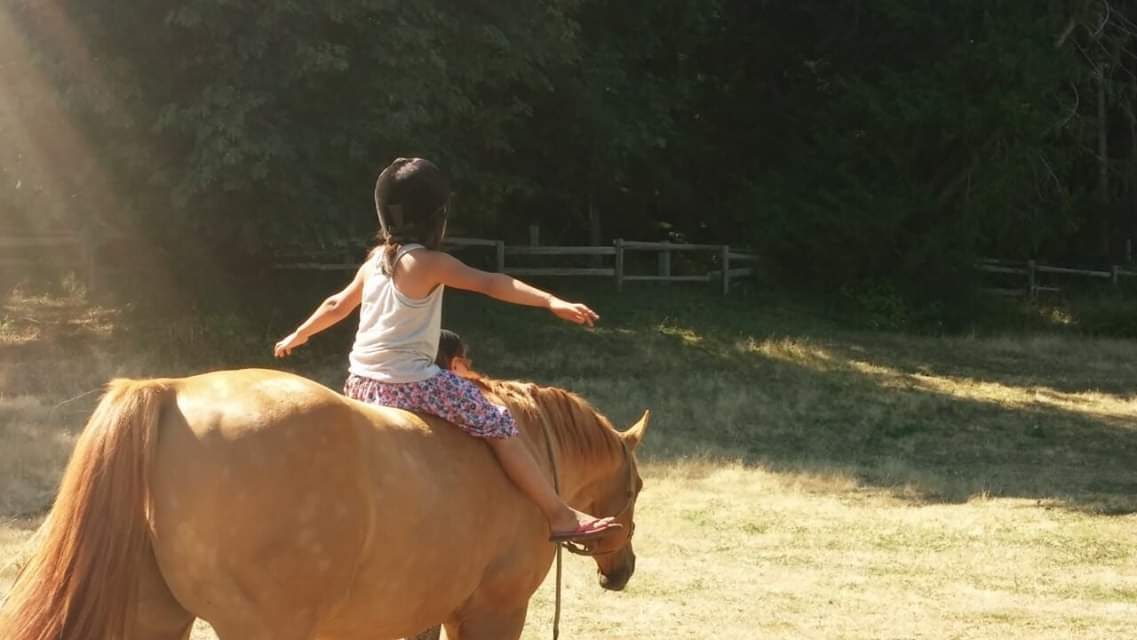Since 1998, Native Horsemanship Youth Program’s Founder, Lynne Ferguson has offered lessons to her family, neighbors, and all interested youth in the Suquamish tribe. Located on over 30 acres in the Port Madison reservation, what began as a small program for the Suquamish tribe has grown into a nonprofit serving multiple generations of youth in indigenous techniques of riding horses, which she learned from her Comanche great-grandfather and grandmother.
They are proud to be a Native-led nonprofit. Their board president is a Suquamish tribal member whose children are also part of the program.
“We’re now in our second generation. The parents of children in the program rode the same horses their kids are riding now,” said Ferguson.
The program is free to everyone. Participants are only asked to make a donation if they are financially able to.
“Riding a horse the way we do is like dancing. It’s intuitive, it’s breathwork, and seeing how the horse is responding to you.”
Lynne Ferguson, Founder
Before the COVID-19 pandemic, youth would come on a weekly basis all year round, Some participants shuttled in from the tribal youth center or nearby housing three times a week while others came everyday. Youth are currently limited to groups of five per day.
“It’s kind of like having your own horse. The kids develop relationships with the horses. It’s not only for rich kids. With us, everyone can have a horse,” said Ferguson.
Ferguson has been fascinated with horses since she was young. Her grandmother instilled in her the awareness and relationship needed to ride a horse without a saddle or bridle. That awareness is passed onto participants and encouraged beyond their time with the horses.
“Riding a horse the way we do is like dancing. It’s intuitive, it’s breathwork, and seeing how the horse is responding to you” said Ferguson.
Ferguson’s passion for horses and building relationships with the natural world resonates with the youth she works with. They often find their own sense of peace in the outdoors. The organization is now a model program for other tribes doing this work.
When asked what she wants people to know about her organization, her answer was simple.
“I’d just like people to know that we’re here. This program has been free since 1998 and we survive on small donations as well as my music projects,” said Ferguson.
With funding from the Youth Development Nonprofit Fund, they now have a fund for vet bills, bulk feed for the horses as well as new helmets and other safety equipment for participants.

